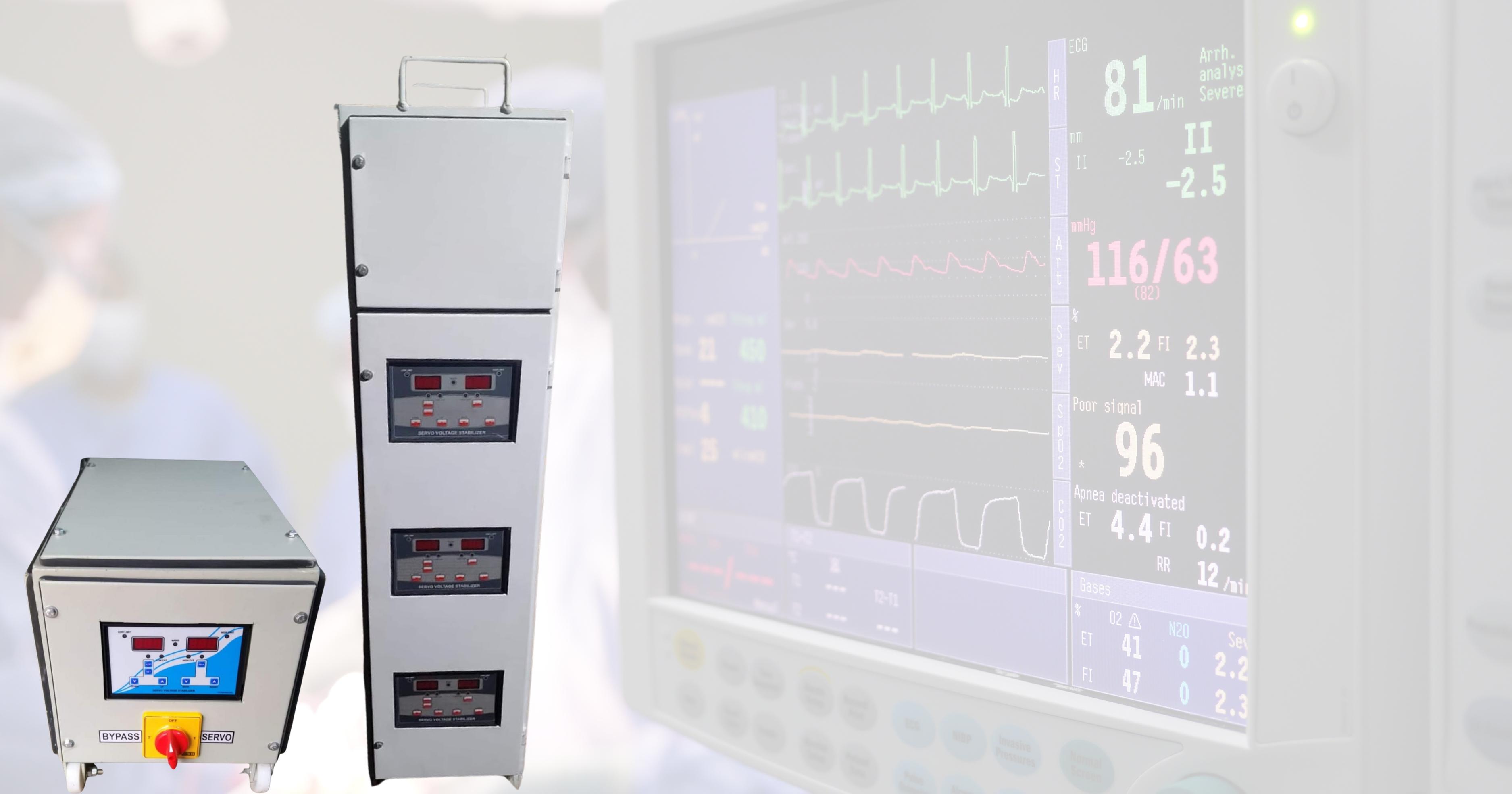Why Do Hospitals Need Servo Stabilizers?

Hospitals play a critical role in healthcare, where uninterrupted power is essential to operate life-saving medical equipment and ensure patient safety. Voltage fluctuations or power outages can severely impact sensitive devices like ventilators, CT scanners, and ICU monitors, leading to equipment failure, costly repairs, or even risking lives. This is where servo stabilizers become indispensable.
A servo stabilizer is a voltage-regulating device designed to maintain a steady output despite input fluctuations. For hospitals, it ensures a consistent power supply, preventing malfunctions and extending the lifespan of critical medical devices. But why are they so essential?
Protecting Medical Equipment
Advanced medical equipment, such as ventilators, MRI machines, and patient monitors, rely on precise electrical input. Even minor voltage fluctuations can disrupt their functionality or cause permanent damage. For example:
-
Ventilators in ICUs cannot afford downtime due to voltage instability.
-
MRI or CT scanners may suffer imaging errors or breakdowns from power surges.
-
Surgical tools like electric scalpels need stable power to avoid risks during operations.
Servo stabilizers act as a safeguard, ensuring these devices receive steady power, preventing operational failures, and maintaining reliability.
Ensuring Patient Safety
In critical settings like emergency rooms or operating theaters, uninterrupted power is vital. Any equipment failure due to voltage instability can have life-threatening consequences. Servo stabilizers ensure:
-
Voltage Stability: Avoiding unexpected shutdowns.
-
Reliable Backup Support: Seamless transitions with UPS or generators.
-
Reduced Failures: Enhancing device reliability and patient trust.
Operational Efficiency and Cost Savings
Hospitals function 24/7, with a high dependency on electrical equipment. Voltage fluctuations can disrupt workflows, leading to downtime in diagnostic labs or surgical units. Servo stabilizers minimize these issues by:
-
Prolonging equipment life.
-
Reducing repair and maintenance costs.
-
Supporting uninterrupted operations in ICUs, labs, and theaters.
Addressing Power Challenges
Urban hospitals face grid overload issues, while rural hospitals often encounter unstable supplies. Servo stabilizers ensure smooth power delivery in both cases, making them essential across locations.
Energy Efficiency and Sustainability
Modern servo stabilizers optimize power usage, reducing energy waste and lowering operating costs. Hospitals also benefit from a smaller carbon footprint, aligning with global sustainability goals.
Types of Servo Stabilizers Used
Hospitals use various stabilizers based on their needs:
-
Single-Phase Stabilizers: For smaller equipment like infusion pumps.
-
Three-Phase Stabilizers: For high-load devices like MRI or X-ray machines.
-
Digital Stabilizers: For sensitive tools like ventilators.
-
Customized Stabilizers: For entire departments.
Hospitals often collaborate with servo stabilizer manufacturers to select the right stabilizer, ensuring compatibility with their infrastructure, voltage range, and equipment sensitivity. Investing in a high-quality servo stabilizer safeguards lives, reduces costs, and enhances efficiency.
- Art
- Causes
- Crafts
- Dance
- Drinks
- Film
- Fitness
- Food
- Juegos
- Gardening
- Health
- Home
- Literature
- Music
- Networking
- Other
- Party
- Religion
- Shopping
- Sports
- Theater
- Wellness


